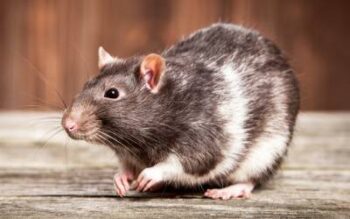 Visitors are normally welcome in the fall, but you don’t want uninvited furry, rodent visitors. How can you tell the difference between a mouse and a rat, or a mole and a vole? Read on for a guide to the rodents you may find on Long Island.
Visitors are normally welcome in the fall, but you don’t want uninvited furry, rodent visitors. How can you tell the difference between a mouse and a rat, or a mole and a vole? Read on for a guide to the rodents you may find on Long Island.
Rats
 On Long Island, the vermin from the rat family that you will most commonly find is the Norway rat – which is also known as the water rat and sewer rat. Yes, as those latter two names indicate, they can swim.
On Long Island, the vermin from the rat family that you will most commonly find is the Norway rat – which is also known as the water rat and sewer rat. Yes, as those latter two names indicate, they can swim.
This species arrived in America in the 1700s on ships. The Nassau County Department of Health says that Long Island may have just as many rats as the city; they can just hide more easily in the suburbs. Rats are easy to distinguish from mice because they’re bigger, 7-9 ½ inches long. Sometimes also called brown rats, they sometimes have a scattering of black hairs among the brown fur on their backs and commonly have a white to gray underside.
Contrary to popular belief, rats are not nocturnal. They can be active any time of day, but they have poor eyesight so they frequently like the nighttime when it is quiet and less humans are active to get in their way.
Mice
House Mice
 When you see mice in pop culture, house mice are usually the version depicted. Only 2 1/2-3 ¾ inches long, their fur varies from light brown to dark gray with white bellies. Their bodies are round with long tails (about 2.75 to 4 inches long) and large ears.
When you see mice in pop culture, house mice are usually the version depicted. Only 2 1/2-3 ¾ inches long, their fur varies from light brown to dark gray with white bellies. Their bodies are round with long tails (about 2.75 to 4 inches long) and large ears.
House mice are prolific breeders. One female can have up to six babies every three weeks, producing as many as 35 young per year.
Deer mice/White-Footed Mice
Deer mice, also called white-footed mice, are typically found on farms or in rural areas so they are more common in those parts of Long Island. They can also be found in sheds and vacation homes.
Deer mice are larger than house mice – 5-7 inches long. Their fur is brown with a white underbelly and feet. Like house mice, they have round bodies and large, round ears. Deer mice are often carriers of Hantavirus, which can make them dangerous.
Voles
 Voles are small rodents that look like field mice at first or possibly hamsters. Voles have thick gray or light brown fur with small eyes and short tails. Unlike mice, they have small, rounded ears and fur often covers them, making them difficult to notice.
Voles are small rodents that look like field mice at first or possibly hamsters. Voles have thick gray or light brown fur with small eyes and short tails. Unlike mice, they have small, rounded ears and fur often covers them, making them difficult to notice.
While voles are not related to moles at all, both creatures tunnel which can cause problems in your yard. Voles eat grass and stems of plants, so their tunnels tend to be closer to the surface than that of moles – but they are still a pest if they enter your property.
Moles
 Moles are not rodents, but these mammals are commonly mistaken for rodents, so we are including them here for convenience.
Moles are not rodents, but these mammals are commonly mistaken for rodents, so we are including them here for convenience.
Moles have long bodies with over-sized front paws for digging through dirt. Their dark fur is dense and short, almost like velvet. Nearly blind, their eyes and ears are small, but their nose is large and pointed. However, since moles burrow underground, you might see signs of their tunnels before you see the mole.
Signs of a Mole in your Yard:
- Discolored or dead grass in a line or following a path
- Mounds of dirt that are mole tunnel entrances
- Raised ridges across your lawn
- Parts of your lawn feel “squishy”
As insectivores, moles could be an asset to homeowners if it weren’t for their burrows. Those tunnels can wreak havoc to your property and could cause injuries from stepping into holes or having ground collapse under you. The burrowing can destroy the root system of other plants and shrubs. Also, other creatures – like rats and mice – could seek shelter in the holes left behind by moles, causing other infestations.
Arrow Exterminating Is the Rodent Experts
If you have a rodent problem, call in the professionals at Arrow Exterminating. The sooner you contact us, the sooner we can help you live in a critter-free environment. To get started, contact Arrow Exterminating today.



